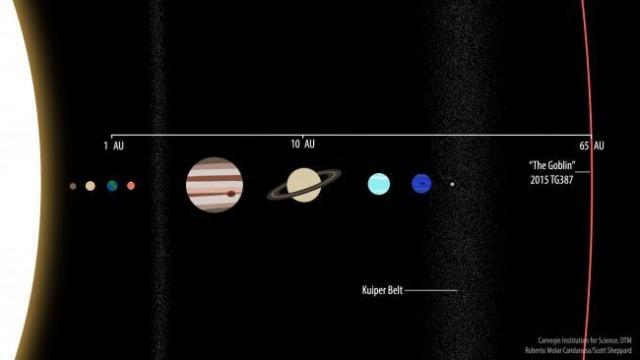New dwarf planet ‘Goblin’ moves border of known solar system
Researchers from the Carnegie Institution for Science, Northern Arizona University, and the University of Hawaii this week found a new frontier.
It was announced on Tuesday that astronomer Scott Sheppard together with his colleagues Chad Trujillo and David Tholen stumbled upon a new dwarf planet while they were searching for a different celestial body, Planet X (also known as Planet Nine).
“These distant objects are like breadcrumbs leading us to Planet X. The more of them we can find, the better we can understand the outer Solar System and the possible planet that we think is shaping their orbits—a discovery that would redefine our knowledge of the Solar System’s evolution,” Sheppard was quoted as saying in an article published by Carnegie Science.
The new dwarf planet has been named 2015 TG387 by the International Astronomical Union’s Minor Planet Center, but because it was discovered during Halloween month, the researchers have nicknamed it "The Goblin."

Sheppard and his team first spotted The Goblin in October 2015 and it took them three years to understand the planet's orbit.
According to a report by the New York Times on the discovery, The Goblin is "about 7.4 billion miles from the sun, or about 2.5 times farther away than Pluto" at its closest point to the sun.
"At the other, most distant end of its elliptical, 40,000-year orbit, TG387 is nearly 70 times farther from the sun than Pluto — more than 200 billion miles," the report added.

Northern Arizona University’s Trujillo worked with University of Oklahoma’s Nathan Kaib to run simulations to understand the possible effects of Planet X on The Goblin's orbit and they found that there is "gravitational shepherding" that keeps a stable distance between the two planets.
“What makes this result really interesting is that Planet X seems to affect 2015 TG387 the same way as all the other extremely distant Solar System objects. These simulations do not prove that there’s another massive planet in our Solar System, but they are further evidence that something big could be out there” Trujillo was quoted as saying in the Carnegie Science article.
Moving boldly onward, to where we've never been before! — AT, GMA News




